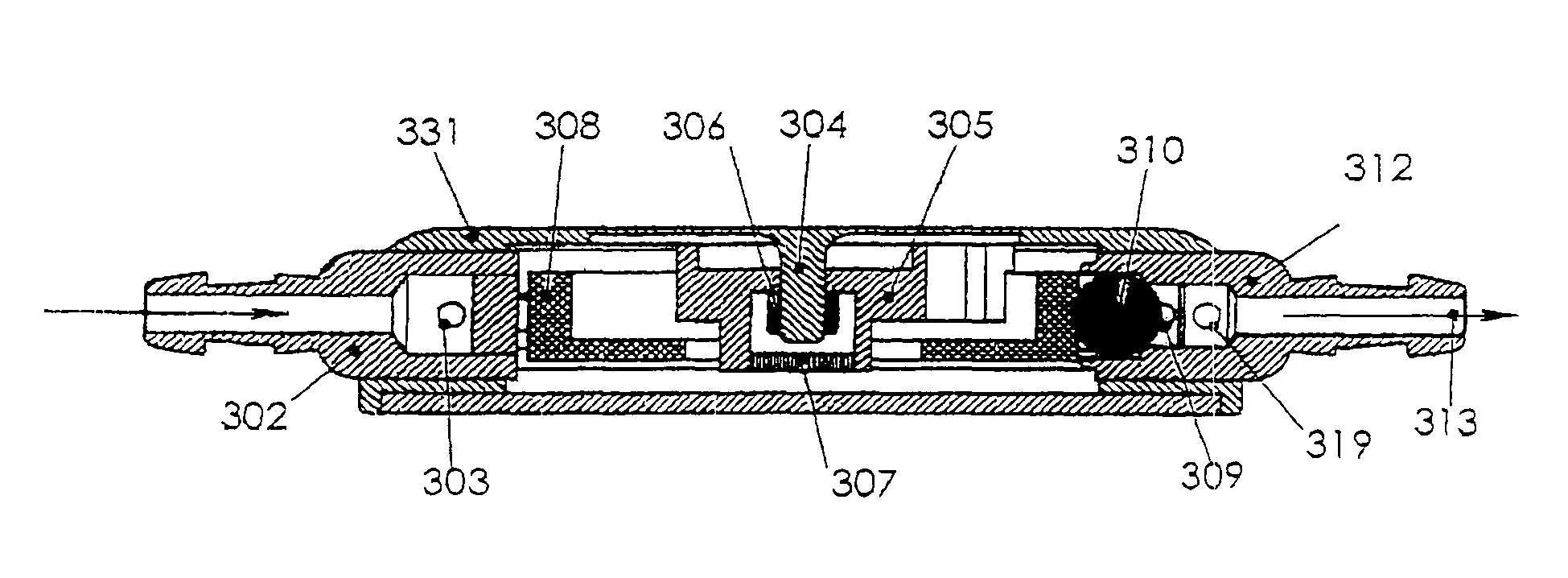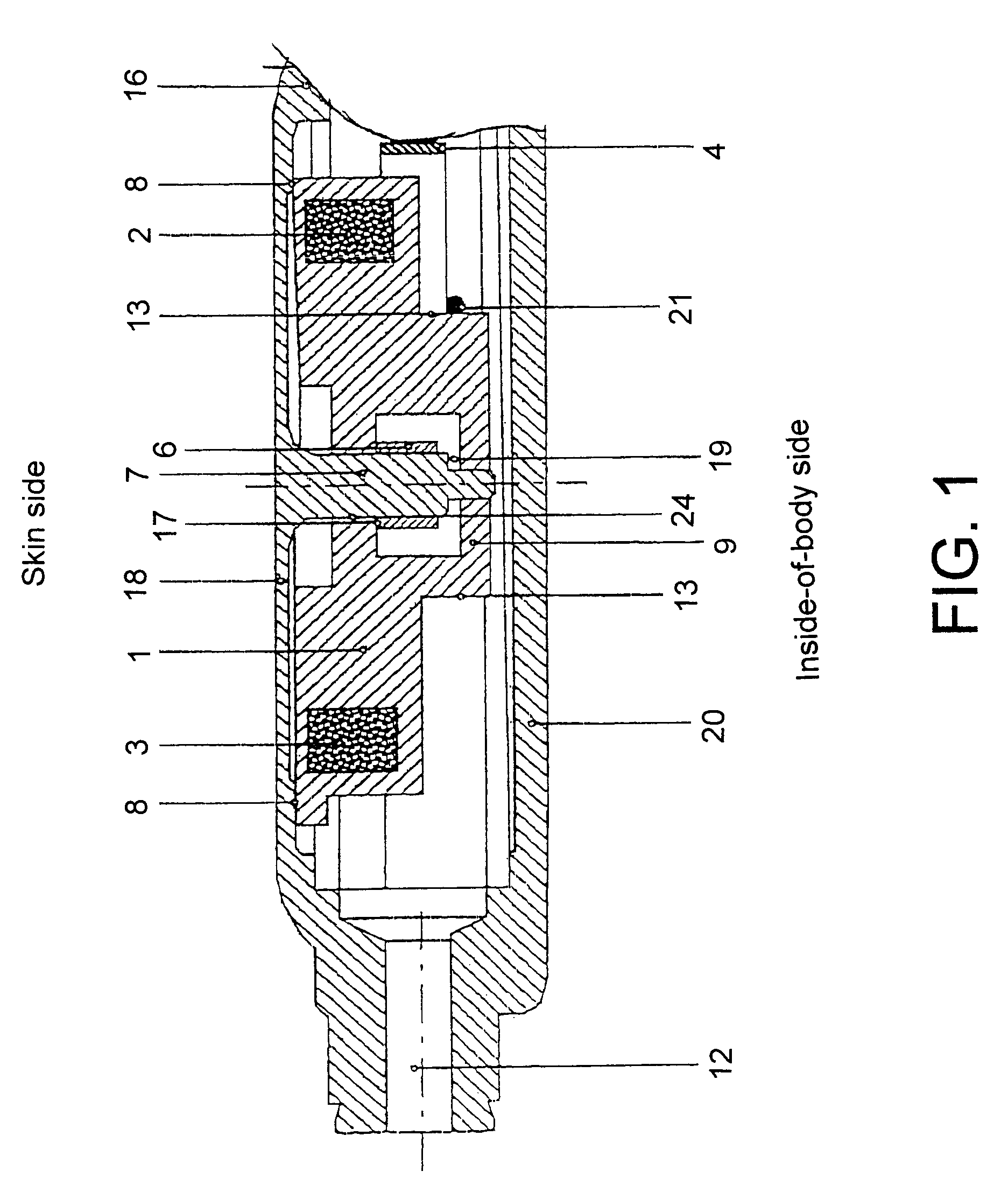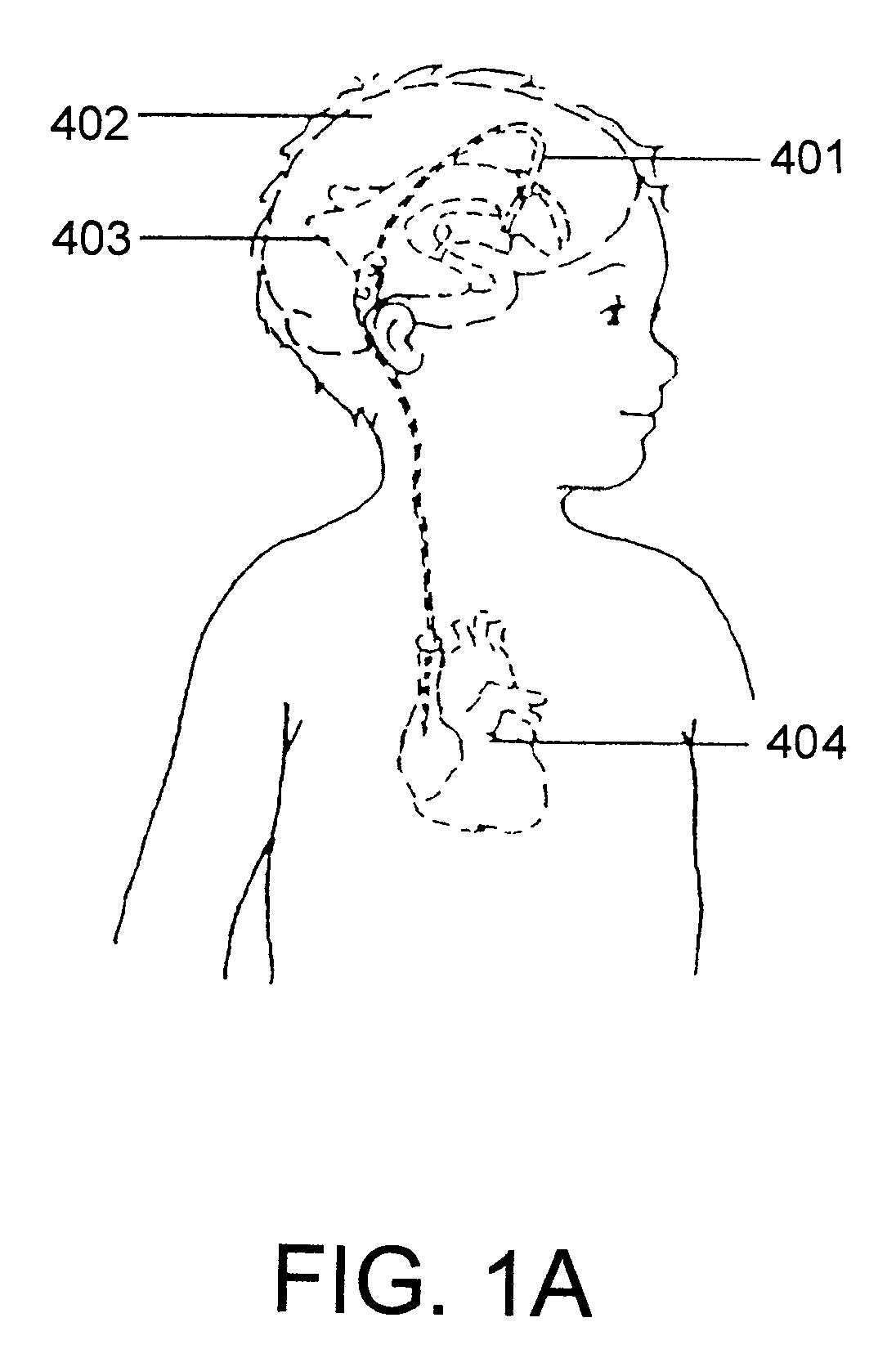Adjustable hydrocephalus valve
a technology of hydrocephalus and valve body, which is applied in the direction of wound drains, catheters, intravenous devices, etc., can solve the problems of unfavorable sliding characteristics between silicon and the rotor, unsatisfactory solutions have not yet been achieved with the valves of the prior art, and achieve strong self-locking action
- Summary
- Abstract
- Description
- Claims
- Application Information
AI Technical Summary
Benefits of technology
Problems solved by technology
Method used
Image
Examples
Embodiment Construction
[0081]FIG. 5 shows an example of a hydrocephalus treatment device connected to a patient. The device comprises a ventriculo-atrial (VA) shunt 401. The VA shunt 401 moves cerebrospinal fluid from the ventricles 403, or spaces in the brain 402, into the atrium, or top chamber, of the heart 404 through a vein in the neck.
[0082]FIG. 7 shows an example of a hydrocephalus treatment device connected to a patient. The device comprises a ventriculo-peritoneal (VP) shunt 406. The VP shunt moves cerebrospinal fluid from the ventricles 403, or spaces in the brain 402, to a space in the peritoneal cavity inside the abdominal cavity 405.
[0083]In the accompanying drawings, FIGS. 10, 11 and 12 illustrate one exemplary embodiment.
[0084]The valve comprises a solid metal housing 330. In the exemplary embodiment, the valve also includes a valve ball 310 as the closing part of the valve, a gravitation part 308 to produce an elevated closing pressure in the valve, a spring system 316 with an adjustment d...
PUM
 Login to View More
Login to View More Abstract
Description
Claims
Application Information
 Login to View More
Login to View More - R&D
- Intellectual Property
- Life Sciences
- Materials
- Tech Scout
- Unparalleled Data Quality
- Higher Quality Content
- 60% Fewer Hallucinations
Browse by: Latest US Patents, China's latest patents, Technical Efficacy Thesaurus, Application Domain, Technology Topic, Popular Technical Reports.
© 2025 PatSnap. All rights reserved.Legal|Privacy policy|Modern Slavery Act Transparency Statement|Sitemap|About US| Contact US: help@patsnap.com



